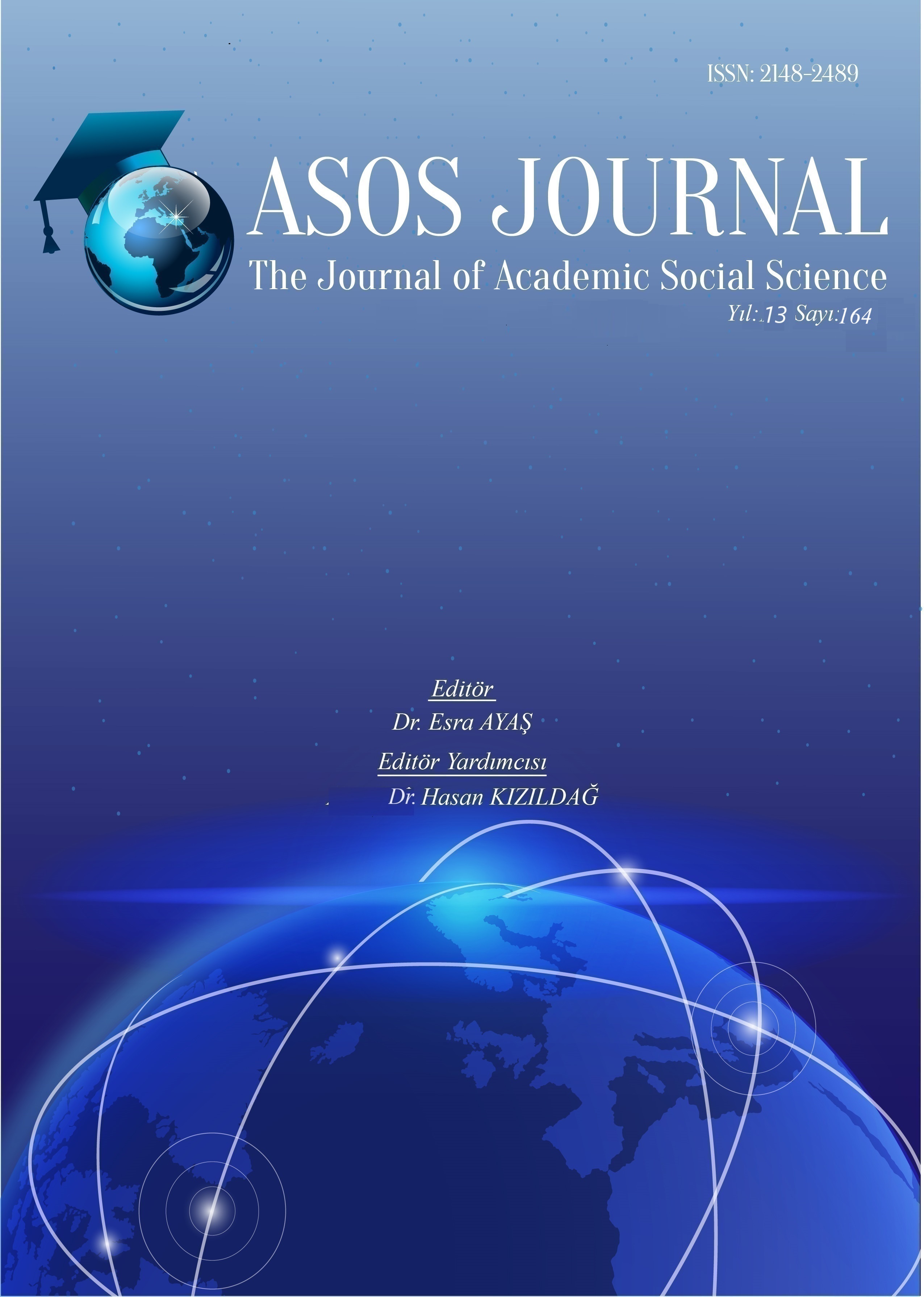21. YÜZYIL BECERİLERİ ODAĞINDA ORTAÖĞRETİM ÖĞRENCİLERİN BESLENME VE SPOR OKURYAZARLIĞI DÜZEYLERİNİN İNCELENMESİ
Author :
Abstract
Bu araştırmanın amacı, lise öğrencilerinin spor okuryazarlıkları ile beslenme okuryazarlıkları arasındaki ilişkiyi ve farklı değişkenler açısından aralarındaki farkları incelemektir. Araştırmada nicel araştırma yöntemlerinden tarama (survey) modeli tercih edilmiştir. Araştırmanın evrenini, Erzurum ilindeki çeşitli liselerde (İmam Hatip Lisesi, Fen Lisesi, Anadolu Lisesi, Çok Programlı Lise) öğrenim gören 9, 10, 11. ve 12. sınıf toplam 66.835 öğrenci oluşturmaktadır. Örneklem olarak, Erzurum İl Milli Eğitim Müdürlüğü'ne bağlı çeşitli liselerde eğitim/öğretim gören 500 öğrenci seçilmiştir. Araştırmada, Kişisel Bilgi Formu, Beslenme Okuryazarlık Ölçeği ve Spor Okuryazarlık Ölçeği kullanılmıştır. Araştırma sonuçlarına göre, lise öğrencilerinin spor okuryazarlık seviyelerinin yüksek, beslenme okuryazarlık seviyelerinin ise orta düzeyde olduğu tespit edilmiştir. Ayrıca, erkek öğrencilerin spor okuryazarlıklarının, kadın öğrencilerinkinden istatistiksel olarak anlamlı bir şekilde yüksek olduğu, ancak beslenme okuryazarlıkları arasında anlamlı bir fark olmadığı bulunmuştur. Okul türleri arasında spor okuryazarlığı düzeylerinde istatistiksel olarak anlamlı bir farklılık gözlemlenmezken, beslenme okuryazarlıkları arasında anlamlı bir fark olduğu belirlenmiştir. Aktif olarak spor yapan öğrencilerin spor okuryazarlıklarının, aktif olarak spor yapmayan öğrencilere göre istatistiksel açıdan anlamlı derecede yüksek olduğu, ancak beslenme okuryazarlıkları arasında anlamlı bir fark bulunmadığı saptanmıştır. Ayrıca, lise öğrencilerinin spor okuryazarlık puanları ile beslenme okuryazarlık puanları arasında pozitif yönde düşük düzeyde bir ilişki olduğu sonucuna varılmıştır. Son olarak, sınıf seviyesi, anne ve babanın eğitim durumu, kardeş sayısı ve ailenin gelir düzeyi gibi değişkenlerin, lise öğrencilerinin spor ve beslenme okuryazarlıkları üzerinde herhangi bir etkisi olmadığı sonucuna ulaşılmıştır.
Keywords
Abstract
The aim of this study is to examine the relationship between sports literacy and nutrition literacy of high school students and the differences between them in terms of different variables. In the study, the survey model was preferred among quantitative research methods. The population of the study 66835 students who consists of 9th, 10th, 11th and 12th grade students studying in various high schools (Imam Hatip High School, Science High School, Anatolian High School, Multi-Program High School) in Erzurum province. 500 students studying in various high schools affiliated to Erzurum Provincial Directorate of National Education were selected as the sample. Personal Information Form, Nutrition Literacy Scale and Sports Literacy Scale were used in the study. According to the results of the study, it was determined that the sports literacy levels of high school students were high and their nutrition literacy levels were moderate. In addition, it was found that the sports literacy of male students was statistically significantly higher than that of female students, but there was no significant difference between their nutritional literacy levels. While no statistically significant difference was observed in sports literacy levels between school types, a significant difference was determined between nutritional literacy levels. It was determined that the sports literacy levels of students who actively do sports were statistically significantly higher than those who did not actively do sports, but there was no significant difference between their nutritional literacy levels. In addition, it was concluded that there was a low-level positive correlation between the sports literacy scores of high school students and their nutritional literacy scores. Finally, it was concluded that variables such as grade level, education level of the mother and father, number of siblings and family income level did not have any effect on the sports and nutritional literacy levels of high school students.





